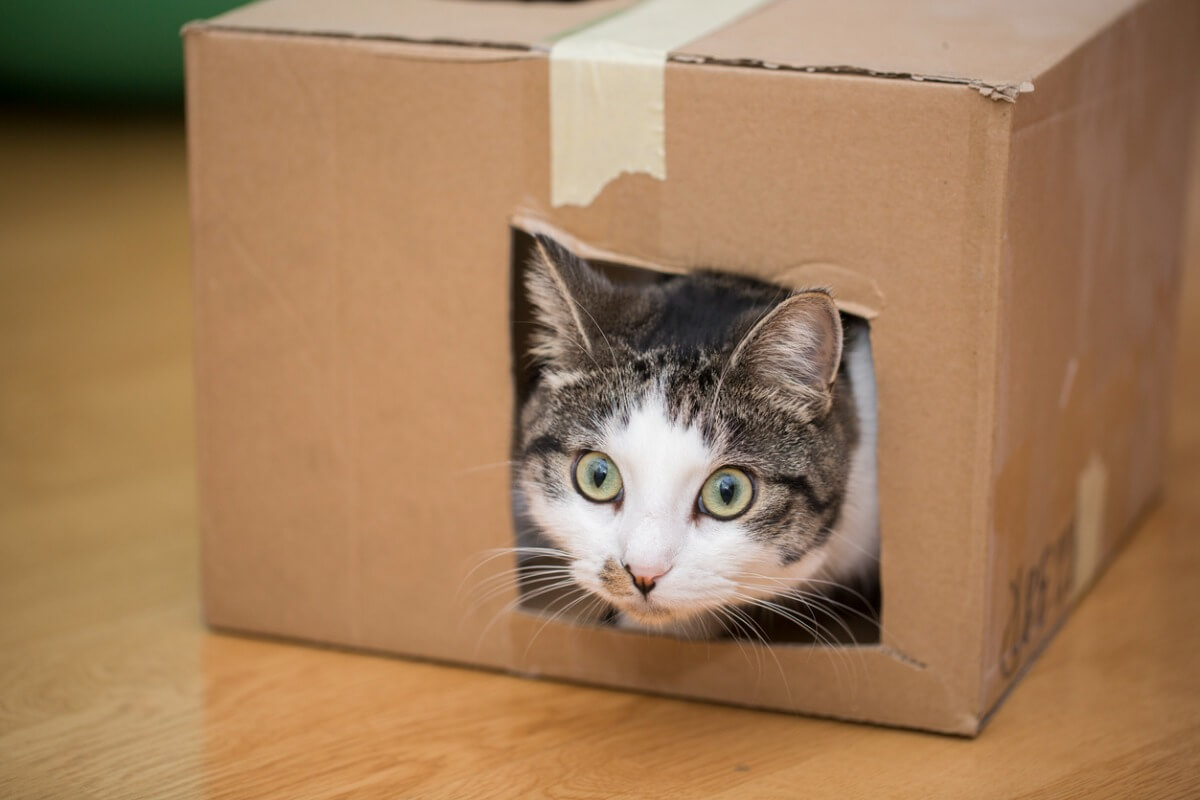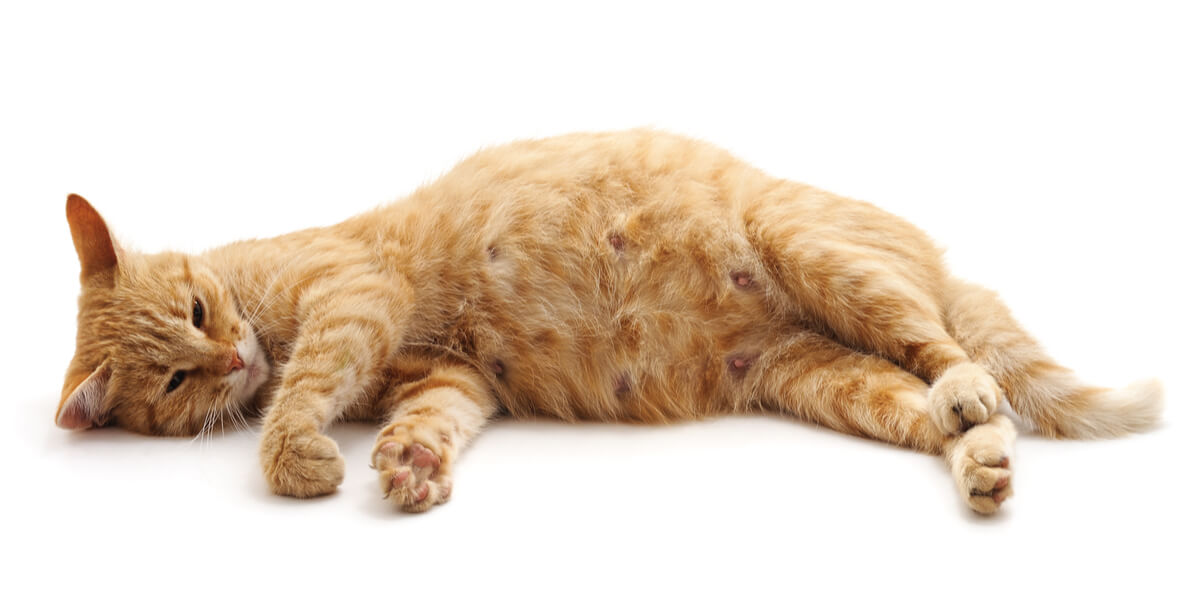How Do I Know if My Cat Is Going to Give Birth? 8 Signs


Written and verified by the biologist Samuel Sanchez
The miracle of life is a fascinating process, regardless of the species. However, cats are quite elusive and secretive, so an owner may not be able to detect when their pregnant pet is about to give birth. Here we show you 8 signs that your cat is going to give birth, in order for you to assist her along the way.
Felines have 2 to 4 periods of heat per year and each of them lasts 15-22 days. A cat’s gestation lasts from 64 to 67 days, or about 9 weeks. In addition, it should be noted that a litter can come from more than one male, as females can reproduce many times during heat. Without further ado, we’re going to show you the signs of birth in cats.
1. The birthplace
Like most animals, cats try to find the right place to give birth. If she doesn’t find a suitable place quickly, the mother will become restless and agitated. To help them in this, the owner can provide their pet with the following items:
- A wide box, covered at the top, with a side entrance. It can be specifically for cats or made by the owner.
- Plenty of blankets.
- An area away from human activity, warm, and without sudden temperature changes.
If the guardian chooses the right spot to give birth, the cat will soon recognize it and begin to spend much more time inside it. At this point, it’s only a matter of days before the birth takes place.

2. Temperature changes
The normal temperature of an adult cat is between 37.7 and 39.1 °C. However, one of the signs that a cat is about to give birth is a reduction in this temperature range, as her internal temperature will drop to 37.2 °C.
It’s possible to measure this parameter with a thermometer in the cat’s axillary area, but it may be better not to disturb her too much. As the veterinary website Guildecrest Cat Hospital tells us, there are other signs that are more easily observable and less intrusive for the mother.
3. An increase in the size of the mammary glands
One of the symptoms of pregnancy in cats is that their mammary glands begin to grow little by little. These are arranged in 2 parallel rows and, in total, there are 8 of them, so they become quite noticeable at the end of gestation. The cat starts to produce milk a couple of days before birth.
You have to be very careful when observing this sign. Make sure that all the mammary glands have grown equally, otherwise the bulging of 1 or 2 nipples could indicate a mammary tumor. Unfortunately, these neoplasms are almost always cancerous in cats.
Spaying massively reduces the chances of the cat suffering from breast cancer in her lifetime.
4. Poor appetite
The cat’s caloric intake increases as the fetuses grow inside her, consuming up to 50% more than normal by the end of gestation. You’ll notice that your pet is about to give birth if she suddenly eats considerably less in the 2-3 days before delivery. This is normal, as the kittens are pressing on her abdomen and she’ll have less appetite as a result.
5. Behavioral changes
One of the signs that your cat is about to give birth is that she’ll show marked behavioral changes during the last week of pregnancy. She may confine herself to one area of the house (almost always in the birth area, or she may become extremely affectionate).
6. Licking in the vulvar area
A cat about to give birth will lick her vulva a lot, as it emits natural discharges that warn of the physiological changes in her body. This behavior is natural and there’s nothing to worry about, because the pet is sanitizing itself as much as possible to avoid infections (and so that the kittens will arrive into the world clean).
7. Nervousness
Every mammal can feel something as important as childbirth in their body. A cat that’s about to give birth (especially if she’s a first-time mother) will have problems channeling her emotions. Because of this, it’s common for her to be restless, to walk from one end of the room to the other constantly, or to meow as if she wanted to tell you something.
The best thing to do in these cases is to just be with your cat and not punish her behavior. Let her be the one to look for you and avoid unnecessary stress, otherwise you could generate hostility or aggression in her.
8. Beginning of contractions
As in humans, the uterine musculature of the cat begins to contract in the first phase of childbirth to induce the advancement of the offspring through the channel. In addition, the loosening of the perineum (the area between the anus and the vulva) can be seen with the naked eye.
You can feel your cat’s contractions by observing her abdominal area or by placing your hand (very gently) on her belly. If you can detect them, it’s safe to say that labor has begun.

A slow and demanding process
We’ve given you 8 signs that your cat is about to give birth, but the real challenge begins when the birth itself starts. The whole process usually takes between 2-5 hours, but it’s common for a cat to stop giving birth, nurse her kittens and then give birth again in the next 24-36 hours. Therefore, it’s necessary to extend the monitoring as long as necessary.
If you notice that anything is wrong, don’t waste any time in taking your pet to the vet. Early action may not only save the lives of the offspring, but will also put the mother herself out of danger.
All cited sources were thoroughly reviewed by our team to ensure their quality, reliability, currency, and validity. The bibliography of this article was considered reliable and of academic or scientific accuracy.
- How To Tell If Your Cat Is In Labor, Guildecrest Cat Hospital. Recogido a 4 de octubre en https://guildcrestcathospital.ca/cat-labor/
- How to Tell When a Cat Is Ready to Give Birth, Fuzzy. Recogido a 4 de octubre en https://yourfuzzy.com/blogs/cats-health-and-wellness/how-to-tell-when-a-cat-is-ready-to-give-birth
- How Do You Know Your Cat Is Ready to Deliver Her Litter of Kittens?, Sylvan Corners Hospital. Recogido a 4 de octubre en https://www.sylvanpets.com/how-do-you-know-your-cat-is-ready-to-deliver-her-litter-of-kittens
- Cats Protection (2015). Pregnant cats, birth and care of young kittens. Recogido a 12 de marzo en: https://www.cats.org.uk/media/1029/eg18_pregnant_cats-_birth_and_care_of_young_kittens.pdf
- Sanchez, A. E., & Silva, M. E. (2002). Biología de la gestación en la gata doméstica (Felis catus). Archivos de medicina veterinaria, 34(2), 147-156.
This text is provided for informational purposes only and does not replace consultation with a professional. If in doubt, consult your specialist.